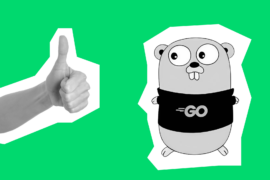One does not simply choose a tech stack for developing a program with a snap of the fingers. Recognize that reference?
Indeed, much like Frodo’s perilous journey to Mordor, choosing the optimal programming language for your software’s backend can be a quest fraught with challenges and crucial decisions.
If your plan is to develop a data-intensive application, a highly performing microservice, or a complex web application, you need to learn the differences between Go vs Python to pinpoint the best-fit programming tool for your needs.
Explore this post to find out the distinctive features of these languages, their strongest points and limitations, and what kind of projects they are most suited for.
Our mission is to equip you with a thorough grasp of both languages that enables you to make an informed choice within your project’s particular needs.
Need a consultation on the tech stack for your web solution right away? Reach out to us! With experience in developing over 300 web projects, our developers are ready to offer their professional insights and apply their practical skills.
Contents
- Go vs. Python: General Differences
- A Detailed Feature Comparison of Golang and Python Programming Languages
- Use Cases Where Golang and Python Are Frequently Used
- What’s the Future for Python and Go?
- Final words
Go vs. Python: General Differences
As two formidable players in the programming arena, Go and Python are frequently pitted against each other in programming discussions. Why exactly these two?
According to the most recent Tiobe survey, as of September 2024, Python is the most widely used programming language in web development.
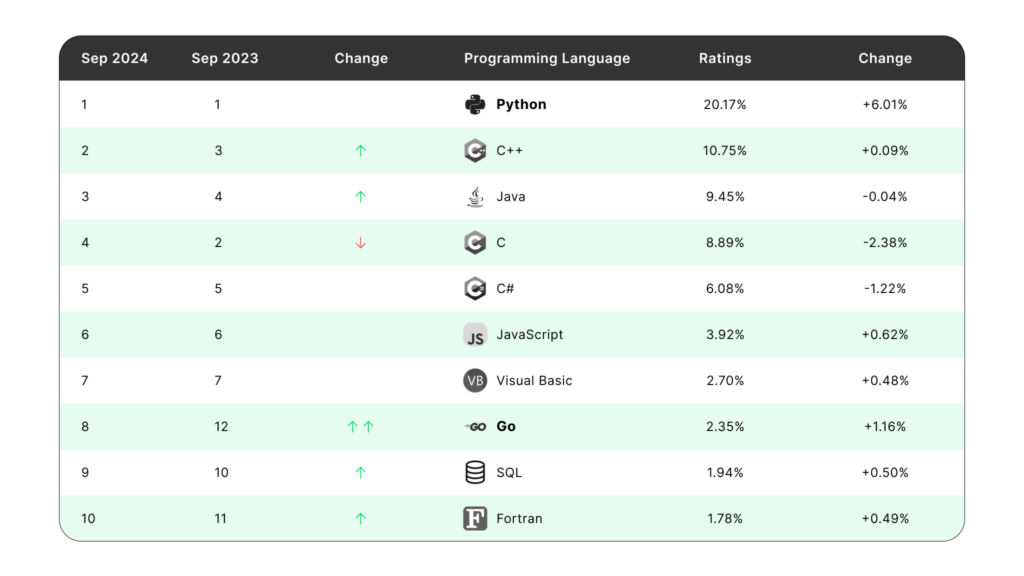
Meanwile, Go, the young man among its ‘colleagues’, is rapidly gaining interest points among tech engineers and project owners due to its impressive speed of compilation and concurrency functions.
Developers and business leaders have recognized Go’s potential, turning initial whispers about its capabilities into a roar throughout the tech community, significantly increasing its appeal.
Let’s go through the key points of each language.
Python
If you want something done right, do it yourself. Apparently, this was the mindset of Guido van Rossum in 1989 before he created Python. The developer was having his Christmas holiday and felt bored. Dissatisfaction with the ABC language prompted him to invent his own user-friendly language that addressed the limitations of ABC. 1991 marked the official release of Python.
Python is a high-level, object-oriented and easy-readable programming language. It’s fast to learn, so developers really love it. Let’s learn some facts about Python:
- Python is an influential player in programming thanks to its large user base, multi-purpose capability, and abstraction-rich environment.
- Developers can craft applications through different coding styles, including procedural, object-oriented, and functional paradigms.
- In contrast to other languages, Python enables programmers to write applications using less code. Its streamlined syntax, combined with obligatory indentation, results in programs that are both compact and easily comprehensible.
- Major world-known corporations, including Google, NASA, Amazon, and YouTube, use Python for their software.
- From artificial intelligence to web platforms, Python’s adaptability has a rich array of libraries and frameworks, facilitating its use in data science, software development, and process streamlining.
Golang
Go’s journey began in 2007 with its conception, culminating in its formal introduction to the world in 2009. The principle of ‘do it yourself’ worked out here too, as the founders of Golang, Rob Pike, Ken Thompson, and Robert Griesemer, were seeking a simple and easy language that could support multithreaded applications. Borrowing concepts from Python and C, the creators formed a groundbreaking language with basic capabilities that outperform those of traditional programming languages.
Go is an efficient open-source, statically typed, and compiled language focused on accelerating critical or high-load system components in existing projects or building concurrent software from scratch. Here are interesting points about Goalng:
- The key mission of Go is creating highly performant and concurrent programs with the help of its top features, such as goroutines and channels.
- Go has strong built-in tools such as efficient memory management, concurrency support, fast compilation and garbage collection that enable developers to work smoothly and uninterruptedly.
- Go developers are affectionately called ‘Gophers’. Fittingly, the symbol of Go is indeed a gopher. The community of ‘GOphers’ is growing rapidly due to the regular programmers’ contributions to the language’s ecosystem. This includes sharing knowledge, exchanging experiences, and providing feedback on proposed changes to the language. Gophers actively participate in discussions about Go’s development, helping to shape its future. Their collaborative efforts make the language more user-friendly and robust, which in turn generates increased interest in Go among developers.
You can get more familiar with and find out what the Go programming language is with our Golang experts in our special comprehensive guide.
Python and Go are both used for the backend of web programs. Below, we list characteristics where the differences between the languages are evident.
| Aspect | Go | Python |
| Definition | Golang emerges as a purpose-built, compiled language with static typing, tailored to writing reliable programs that shine in speed, development efficiency, and parallel task execution. | Known for its ease of use, clear syntax, and adaptability, Python is an interpreted, dynamically typed language that finds application across diverse fields. |
| Object-oriented programming | Does not support | Supports classes and objects |
| Concurrency | Built-in goroutines | Restricted by GIL in CPython |
| Scalability | Better for large-scale applications | Can be challenging for large projects |
| Community | Smaller but growing | Large and well-established |
| Code Readability | Good, but more verbose | Excellent, emphasizes readability |
| Prototyping | Less suitable | Allows for rapid prototyping |
| Execution | Compiled to machine code | Interpreted at runtime |
Despite the difference in characteristics as shown above, the fields of implementing Python and Golang can overlap in certain projects. Both languages can be commonly used in similar types of programs. Let’s examine some examples:
1. Web Development:
- Backend API services
- Microservices architecture
- RESTful APIs
- GraphQL servers
Example: A social media platform’s backend, where Python (using Flask or Django) and Go (using Gin or Echo) could both be used to create scalable API services.
2. Data Processing and Analytics:
- ETL (Extract, Transform, Load) pipelines
- Big data processing
- Real-time data streaming
Example: A financial data analysis system that processes large volumes of market data, where both Python (with libraries like Pandas) and Go (with its concurrent processing capabilities) could be employed.
3. Machine learning and AI:
- Model serving and deployment
- Data preprocessing
- Feature engineering
Example: An image recognition service where Python is used for model training (using TensorFlow or PyTorch) and Go is utilized for efficient model serving and API integration.
Does this mean that the decision-making automatically becomes complicated? It might seem confusing at first. However, the right choice between Python vs. Go always depends on project requirements such as development speed, performance needs, team expertise, and other factors.
Let’s examine the nuances that separate these languages by comparing their most prominent features.
A Detailed Feature Comparison of Golang and Python Programming Languages
What makes Python and Golang stand out are their fundamental syntactic elements, areas of common application, user-centric design, and processing speed. To avoid confusion in these points and become savvy on the technologies, we prepared a comprehensive chart.
Golang vs Python: Syntax and Readability
Golang
The creators of Go sought to optimize the coding experience for developers. As a result, they crafted a language with minimalist and readily understandable syntax. An interesting detail is that Go adopted the use of curly braces for code block demarcation from the C language.
Golang code example:
package main
import "fmt"
func main() {
name := "World"
fmt.Printf("Hello, %s!\n", name)
}
Python
Python’s design philosophy centers on simplicity of use and visual clarity, which contributes to the language’s well-known readability. One distinguishing aspect is its reliance on indentation (often four spaces or a tab) to create code hierarchies.
Python code example:
def main():
name = "World"
print(f"Hello, {name}!")
if __name__ == "__main__":
main()
| Conclusion: Python’s syntax is generally more streamlined and simple to learn than Go’s, making it a preferred choice for beginners. However, Python’s reliance on appropriate indentation for code organization might lead to mistakes. Go, being a compiled language, has benefits in execution speed and early error detection during compilation, which are critical for large projects and real-world deployments. |
Python vs Golang: Concurrency and Scalability
Go
Go’s architecture was basically designed for concurrent execution. It employs the built-in goroutines, which are the slim line threads supervised by the Go runtime that interact over channels. Goroutines’ resource efficiency allows thousands of scenarios to run concurrently, leading to excellent scalability.
Python
CPython, the standard Python implementation, has a Global Interpreter Lock (GIL), which limits its capacity to scale and manage concurrent operations effectively. The GIL’s restriction on simultaneous bytecode processing across threads can cause performance bottlenecks, especially in CPU-intensive and multi-threaded contexts.
| Conclusion: For highly parallel workloads, Go typically outperforms Python, making it the preferable language for concurrent programming tasks. |
Python vs Go: Speed and Performance
Golang
As a compiled language, Go translates straight into machine-readable code before execution. This approach leads to quicker operational speeds compared to interpreted languages like Python. Go’s architecture also prioritizes parallel processing, including goroutines and channels that efficiently leverage multicore CPUs.
Python
Python interprets code at runtime, line by line, which increases its versatility but may result in slower performance than compiled languages such as Go. The utilization of the Global Interpreter Lock (GIL) in CPython, its primary implementation, significantly restricts original parallel processing. However, Python’s extensive library base frequently assists in overcoming these restrictions across a wide range of applications.
| Conclusion: Python thrives in coding speed, but it lag in performance for specific use cases, which can be improved with optimized libraries. Go’s built-in compilation mechanism allows for more efficient code authoring. |
Python and Golang: Ecosystem Opportunities
Go
Despite its youth, Go’s ecosystem is expanding rapidly, stressing simplicity and performance. Its broad standard library frequently cuts out the need for additional packages.
Go’s ecosystem is particularly strong in web services, microservices, and cloud-native development.
Notable Go-based tools include Docker and Kubernetes, showcasing the language’s strengths in these areas.
Python
Python’s ecosystem is renowned for its maturity and broad reach. Pip provides developers with access to around 350,000 PyPI packages. The language excels in domains such as data research, machine learning, and web development, due to strong libraries like NumPy, Pandas, TensorFlow, and Django. This diverse environment is bolstered by extensive documentation, an active community, and a wealth of instructional resources.
However, integrating many libraries in a single application might cause conflicts and negatively affect performance, despite the benefits of Python’s wide ecosystem.
| Conclusion: Python’s broad ecosystem of tools allows for adaptation across numerous industries, with particular strengths in data analysis and rapid prototyping. This diversity, however, may sometimes lead to conflicts and performance problems when merging several libraries. The Go ecosystem, while newer, provides a more concentrated collection of powerful tools for developing high-performance, scalable applications, notably in the cloud and network services. |
Go and Python: Security
Go
Go’s design, incorporating static typing, memory safety, and built-in concurrency, enhances program security. The language’s architecture eliminates numerous typical vulnerabilities, including buffer overflows and memory leaks. Many possible security problems are caught before they reach runtime by Go’s compile-time checks.
However, like with any language, incorrect use of certain features can cause security risks.
Python
The security approach is mainly based on its dynamic nature and extensive standard library. It has built-in security features such as input sanitization and safe random number generation. However, the flexibility of Python’s dynamic typing may allow some errors that can slip through to runtime.
Python’s wide ecosystem includes several third-party security libraries, but their accurate implementation is critical.
| Conclusion: Golang allows writing secure code out of the box, while Python’s flexibility in writing code can potentially lead to security oversights. Enhancing security in Python often involves implementing third-party libraries. Both languages require strong programming skills, attention to security, and regular updates to maintain a secure environment. |
The distinct pros and cons of each language might make it tough to determine which is the best fit for your specific development project.
To facilitate your choice, you can contact us and discuss all your project needs, requirements and business goals with our experts with over 8 years of experience in web development. Within one consultation, our developers will carefully examine your idea and advise on the most appropriate language and create a project estimate.

Use Cases Where Golang and Python Are Frequently Used
Python and Golang are not mutually exclusive; they may complement each other in backend development. These languages can be used in tandem inside the same system, handling distinct components based on their respective capabilities. At the same time, they are versatile enough to be employed for a variety of unique projects individually.
Let’s figure out where these programming tools are mostly used.
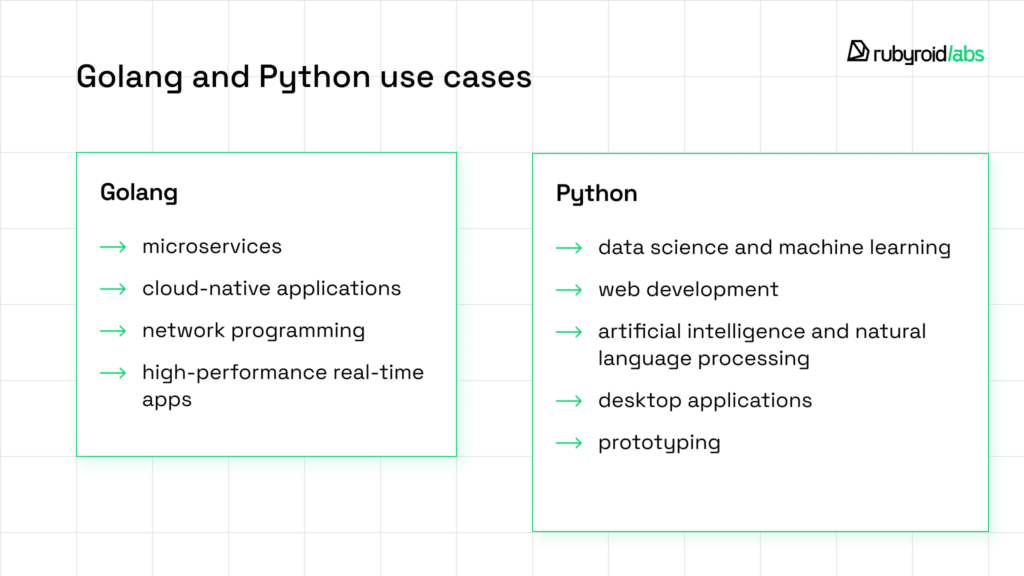
Golang (Go) is commonly used for:
- Microservices: e-commerce services, payments systems. You can build small, robust, and independent services that may be a part of a large system thanks to Go’s built-in concurrency.
- Cloud-native applications: cloud storage solutions, IaaS, SaaS. Apps written with Go run quickly and efficiently. They also have faster response times and can easily handle multiple requests, making them ideal for cloud environments.
- Network programming: VPN clients & servers, network monitoring tools. Golang’s concurrency model enables creating responsive systems that can smoothly handle many simultaneous connections with no need for complex thread management code.
- High-performance real-time apps: collaborative tools, gaming, live streaming & media platforms. Go’s concurrent execution model, efficient memory management, and fast network I/O capabilities make it excellent for building scalable and responsive web services.
Golang Case Studies
CRM development for a travel operator
A leading UK and Ireland tour operator requested a CRM system to simplify their managers’ manual order processing by automating operations. After creating the project documentation containing all goals, needs, and requirements, we built the CRM. Using Golang in microservices, we enhanced payment transaction processes and utilized the language for creating an online check-in system so that it could handle high volumes of users.
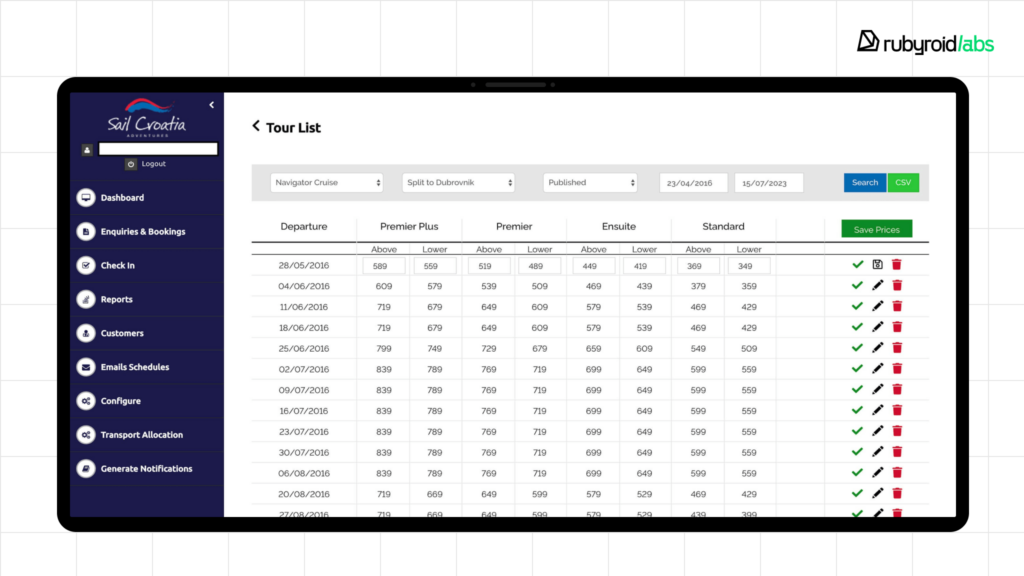
Building a booking system for yoga classes
The largest yoga center in Luxembourg wanted to build a platform where users could book classes online. The booking system needed to be high-performing to process concurrent traffic. We used Go in the backend to develop a booking system and a payment transaction feature.
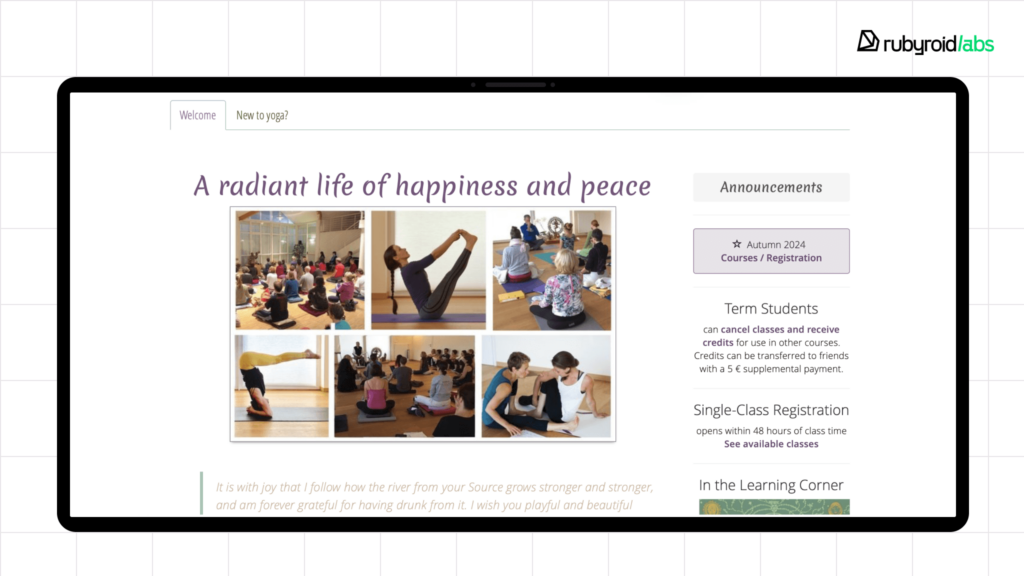
Real estate CRM system development
A CRM database system is designed to help agents and companies process leads from different sources. Using Go in system development improved data processing performance and enabled us to streamline data analytics. The language’s speed and concurrency features ensured seamless presentation of analytics and provided faster overall performance for the system.
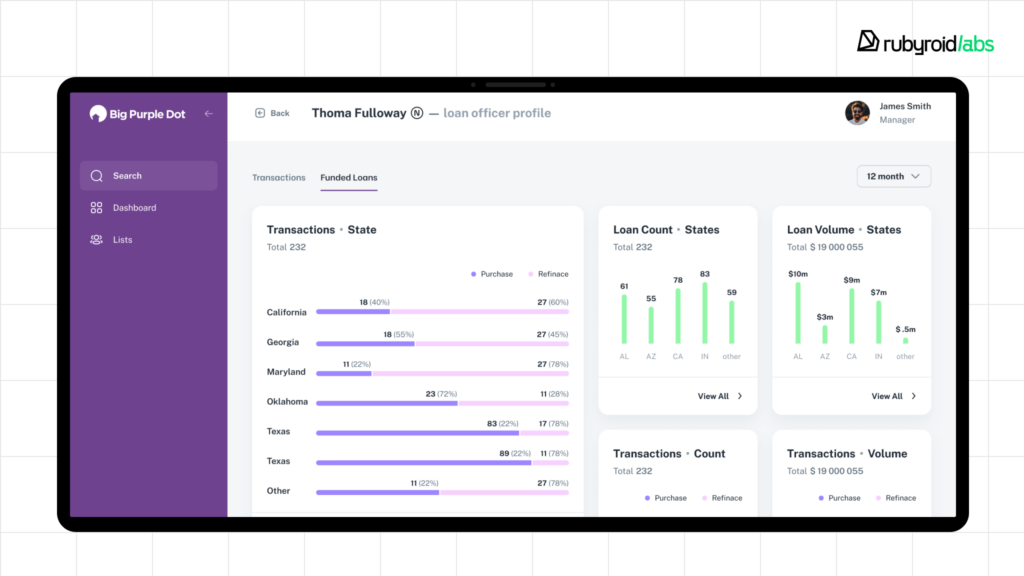
Website development
We used Golang during the reconstruction of our own website, particularly while improving the lead conversion process. We built a robust Go-based contact form and developed a notification feature with Golang after integrating Slack.
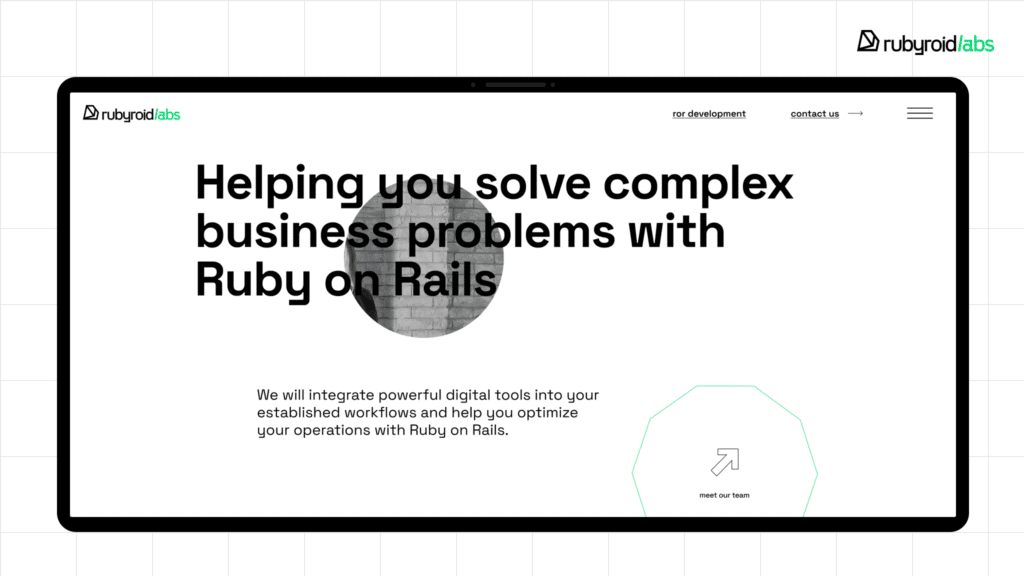
If you are planning to strengthen the microservices of your existing application, develop a cloud-native app, or create a high-performance streaming service, then Golang will fit your project perfectly. If you need an expert view on your project scope or want to hire Go developers—go on our Golang development services page or just get in touch.
Python is commonly used for:
- Desktop applications: graphic design software, productivity tools, game development. The flexibility of Python to operate on diverse systems such as Windows, Mac, and Linux enhances its suitability for a range of software applications.
- Web development: e-commerce platforms, content management systems, social media backends. Python’s robust frameworks designed for web development, such as Django and Flask, allow for developing various types of high-growth and secure web applications.
- Artificial intelligence and natural language processing: chatbots, recommendation systems, text analysis. Python has several machine learning libraries, such as TensorFlow and NLTK, using which developers use to enable the systems to learn from data, “understand” human language, and think and respond like people do.
- Machine learning and data science: data visualization, predictive models, statistical analysis. Python’s rich ecosystem of libraries like NumPy, Pandas, and Scikit-learn helps build applications able to process large datasets and implement complex algorithms.
- Prototyping: rapid testing of ideas. Python’s easy-readable code runs immediately without needing to be compiled first. This makes Python perfect for prototyping and testing ideas quickly, whether creating new apps or solving complex problems.
Making a decision about any of the programming languages lies deeper than it may seem. It depends on your needs, including the need for scalability and performance from one side and the long-term goals of the application from the other. Both Golang and Python have their unique qualities that shine in the right context.
What’s the Future for Python and Go?
Python and Go are both on track for sustained growth, but their future roles may differ as industry requirements change and their distinct strengths come into play.
Python:
- Strengthening AI and ML positions: As these fields advance, Python’s dominance in data science and machine learning will likely increase.
- Advancements in web frameworks: The arrival of technologies such as FastAPI is enhancing Python’s web development capabilities, perhaps increasing its market share.
- Expanding scientific applications: Python’s significance in scientific research and computation is likely to expand.
- Addressing weaknesses: To sustain its competitive advantage in some domains, Python will need to resolve performance issues and refine its concurrency strategy.
Golang:
- Cloud-centric solutions: Go’s streamlined performance and parallel processing capabilities position it perfectly for cloud and microservice architectures, a trend likely to persist.
- Systems programming: Go’s safety features and convenience of use may make it more competitive with C and C++ in systems programming.
- Network programming: Go’s excellent networking features are expected to encourage growing use in network programming and DevOps technologies.
- Performance-critical applications: Improvements in Go’s compiler and runtime may lead to its increased use in high-performance applications.
- Challenges: To compete in areas now dominated by other languages, Go will need to widen its ecosystem and maybe provide new language features.
Both languages are constantly changing for the better. Python’s efforts to increase performance through projects such as the Faster CPython Project demonstrate its attempts to progress. Similarly, Go’s continuous release of new features shows its responsiveness to developer requirements.
In whole, Python is expected to maintain its advantage in data science and scripting in the future, while Go expands into systems and network development. Both will play important roles in the software development environment, with adoption determined by unique project requirements and developer preferences.
Final words
Both languages – Python and Go are excellent tools for creating amazing apps and systems that can improve users’ quality of lives. The right choice depends not only on your personal view and preferences but also on your audiences’ needs, business goals and market demands.
So, deciding on the tech stack for your future project can be either challenging or as easy as A-B-C, especially if you delegate it to a professional team.
At Rubyroid Labs, we will thoroughly examine your vision, scope and expected outcomes, work out all potential use scenarios for your project and offer a comprehensive plan and project estimate for your consideration.
Get in touch with us, and let’s transform your idea into something extraordinary.




